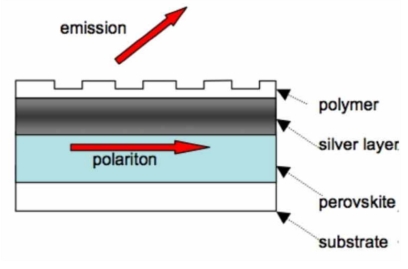Rechercher
Accueil > La Recherche > Axes & Equipes > Physique de l’Exciton, du Photon & du Spin > Optique des états collectifs et des spins (OECS) > Etats collectifs dans les semiconducteurs > Condensats de polaritons et lasers à polaritons dans les microcavités GaN, ZnO
Projects
publié le
The originality of our research project concerning this issue relies on our position at interfaces : between microcavities and the subtle spin spectroscopy for GaAs microcavities, between microcavities and wide bandgap semiconductors for ZnO-based cavities, and between plasmonics and exciton physics for the strong exciton-plasmon coupling. These works require complex samples with respect to their conception, their optimization as well as the multiplicity of fabrication techniques involved in their realization. This justifies in our opinion the recruitment of a research engineer specialized in nano-technologies and clean-room. He would have a central role in mastering the most important technologies of interest for our lab, as well as maintaining a technological watch. In practice, he would allow us to take advantage of all the possibilities of our local clean room : the ATEMI is indeed a so-called “second circle technology lab” and gathers high performance equipments which have been acquired thanks to the recent university transverse actions dedicated to nanosciences. Finally, this engineer would be in charge of the practical link with foreground national technological labs (LPN and CRHEA) which provide us with high quality samples and are partners of most of our national research contracts.
Our recent works evidenced the importance of spin in polariton interactions, through a precise polarization-resolved spectroscopy ; we also developed and studied ZnO-based microcavities in the strong coupling regime at room temperature. The originality and the quality of these two activities allowed us to take part to the european research training network RTN Clermont4, starting in september 2009. It is dedicated to the study of Bose condensation and polariton lasers in microcavities.
The Bose condensation is controlled by polariton-polariton scatterings which depend on spin ; which we will experimentally estimate them through the interpretation of the mixed dichroïsm discovered in our group. Moreover it is possible to change the strength of these interactions through the design of the microcavities, which has drastic consequences on the collective effects (Bose condensation, collapse, ...). The Bose condensation is characterized by the appearance of a macroscopic coherence and the selection of a linear polarization by spontaneous symmetry breaking. In fact the linear polarization of the condensate is pinned due to defects in most samples. We think that the polarization of the condensate can be determined by the polariton splitting in k=0, which we observed through linear dichroïsm. We will therefore study the detailed mechanisms leading to the linear dichroïsm observed in GaAs/GaAlAs microcavities. We will try to establish the existence (or not) of a correlation between the polarization of the condensate and the axes of the linear dichroïsm of the microcavity.
Concerning polariton lasers, ZnO-based microcavities are promising structures for the demonstration of a room-temperature operation. Their advantage compared to GaN microcavities relies in the stronger exciton-photon interaction. Our recent results on the strong coupling regime in these cavities stimulate a new program dedicated to the realization and study of ZnO-based polariton lasers, within our strong french (J. Zuñiga-Pérez, CRHEA) and european collaborations. With N. Grandjean (EPFL, Switzerland), at the edge of the research on GaN microcavities, we plan to reach larger quality factors with an original hybrid concept.
The SCOP project is dedicated to the coupling between plasmons from metallic mesas and excitons in GaAs. It involves theoreticians and experimentalists, as well as Joël Bellessa, who is now working at LPMCN (Lyon). Its three main goals are the following :
• The experimental demonstration of the strong coupling between plasmons and excitons confined in quantum wells ;
• The study of ultra-fast (10fs) Rabi oscillations between excitons and plasmons ;
• The emission of polaritons under electrical injection in hybrid organic-inorganic materials.
We are also prospecting in other directions, such as the non-destructive measurement of the state of quantum boxes in photonic cavities with very large quality factors. This activity stands at the frontier between plasmonics and opto-electronics. The proposed devices should allow a better control of plasmons, especially for the conception of plasmon generators and plasmon filters. Finally the exciton-plasmon coupling is useful for the enhancement of light extraction by a few orders of magnitude and allows the development of more efficient electroluminescent devices.
Beside the new goals sought in our ongoing research, we plan to expand our research project and to continue this work at interfaces : within a collaboration with IEF, CRHEA and CEA-Grenoble (ANR Sinphoni), we will extend our study from planar microcavities (Fabry-Perot) to photonic crystal membrane cavities, in order to realize microlasers in the near UV range. A new fabrication process has been developed, and AlN photonic cavities embedding GaN quantum dots –a well-known nano-object at L2C– have been realized. Their spectroscopic study will rely on the spectro-goniometer developed for ZnO microcavities, as well as the micro-photoluminescence setup. This project will strengthen the collaboration between theoreticians and experimentalists within the group : the microlaser physics is still understood in a phenomenological way, and recent works mainly focused on the technical parameters governing the threshold for laser action. Our systems however present original properties, especially related to the large oscillator strength of wide bandgap materials : the separate modeling of excitonic gain on one hand and photon confinement on the other hand is no longer valid. The refractive index of the active layer presents strong variations at the scale of the light wavelength, which is the typical size of the optical modes in microlasers. We will attempt to develop a theory of the gain in photonic structures, based on the Maxwell-Bloch formalism, which doesn’t dissociate “exciton” and “photon” approaches.









